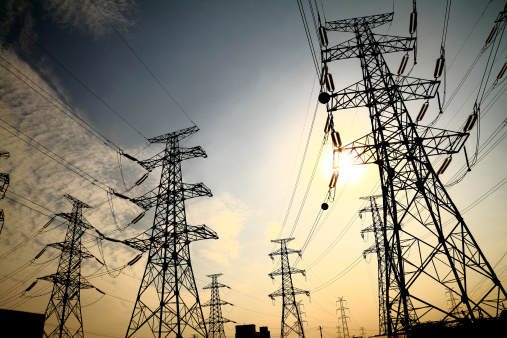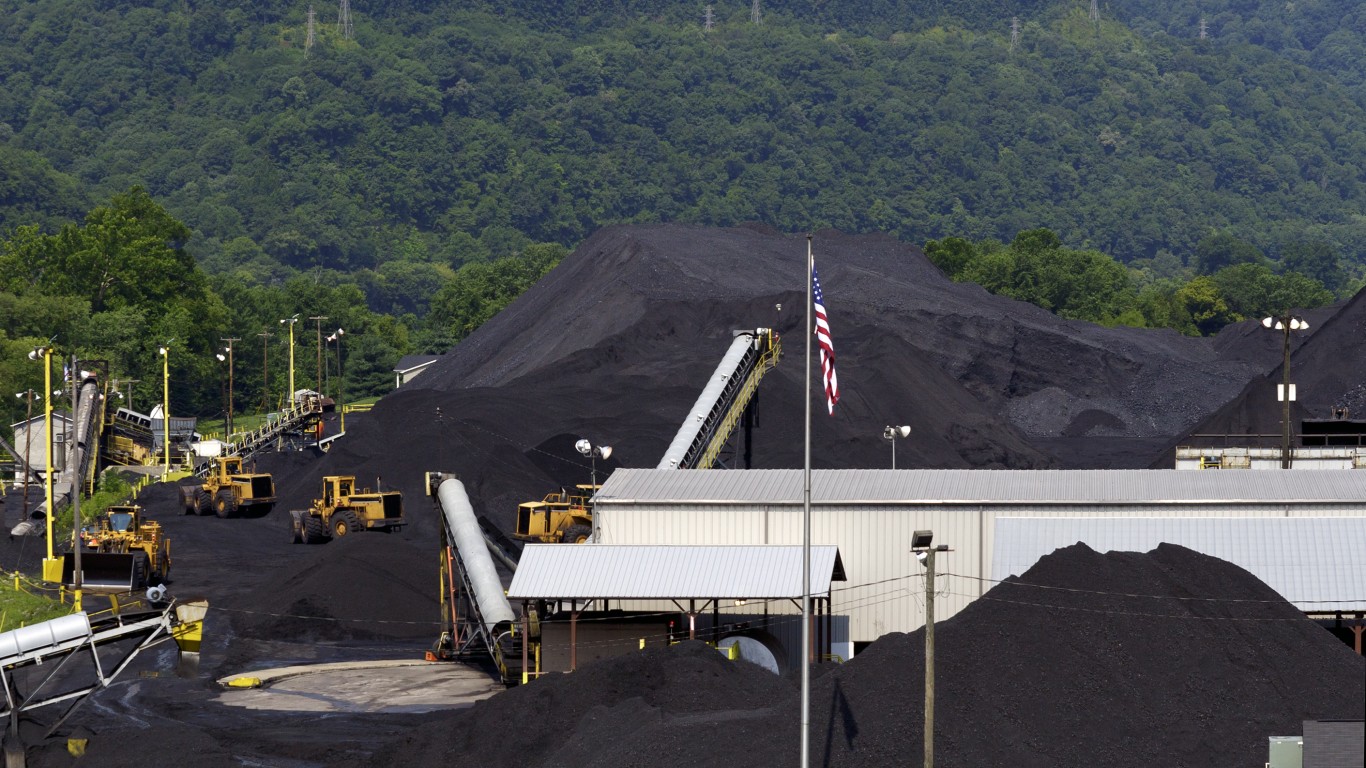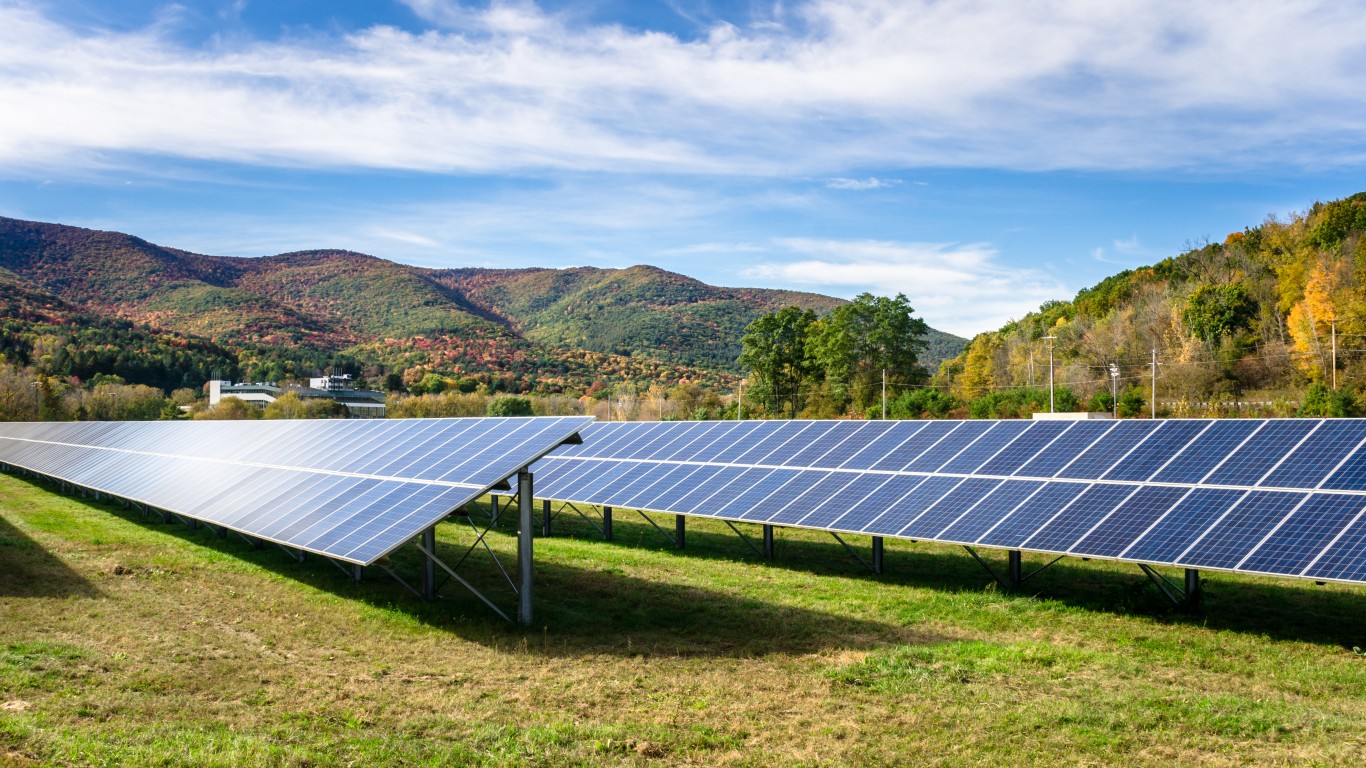The way we produce and consume energy is changing in this country. Recently, coal and oil consumption has fallen. Meanwhile natural gas production has been rising, accounting for more than a third of the nation’s energy production. Renewable energy production, which includes hydroelectric, solar and wind, has grown 45% in the past 10 years.
The United States produced 77.8 quadrillion BTUs (or quads) of energy in 2011, up roughly 3% from 2010. While every state in the country generates some energy, roughly 61% of the country’s 2011 energy production came from just 10 states. Texas alone generated 12.5 quads, or 16.2% of the country’s output. Based on energy production data provided by the U.S. Energy Information Administration (EIA), 24/7 Wall St. reviewed the 10 states that produce most of the country’s energy.
Click here to see the states producing the most energy
Most of the states that generated the highest amount of energy did so because of their large capacity for coal or natural gas production. Six were in the top 10 for total coal production in 2011. This included Wyoming, where 40% of all coal in 2011 was mined.
Of the 10 states that produced the most natural gas in the country in 2011, eight were also among the 10 that produced the most total energy. The three states that produced the most natural gas — Texas, Louisiana and Wyoming — also were the top three for total energy generation. Those three states were responsible for more than half of the country’s natural gas production.
The increasing production of natural gas has been in part the result of the popularization of hydraulic fracking. In Pennsylvania, where the procedure has been heavily used to exploit the Marcellus Shale, natural gas production has increased from 139 trillion BTUs in 2001 to 1.37 quadrillion BTUs by 2011.
Renewable energy represents only a small part of total production for most of the top-producing states because of the sheer volume of production from fossil fuels. One exception is California, which got 31% of total production from renewable sources, primarily hydroelectric power.
While these states are the biggest producers of energy, they are not necessarily the biggest consumers. Wyoming is the second largest source of energy in BTUs in the nation, but the low-population state is just 40th in total consumption. The state produces 18 times the energy it consumes. Other states that generate a lot of energy use much more. California produced 2.6 quads of energy in 2011, but it consumed nearly three times as much.
Based on EIA data, 24/7 Wall St. reviewed the 10 states that produced the most energy in 2011, measured in BTUs (British thermal units). From the EIA, we also reviewed energy consumption from different sectors, consumption per capita and the amount of generated electricity each state imports and exports.
These are the states producing most of the nation’s energy.
10. New Mexico
> Total energy production: 2,261 trillion BTU
> Total energy consumption: 688 trillion BTU (14th lowest)
> Energy consumption per capita: 57.7 million BTU (6th lowest)
> Pct. of energy from natural gas: 62%
New Mexico was the nation’s sixth largest producer of natural gas in 2011, generating the equivalent of over 1,405 trillion BTUs. This accounted for 62% of all energy produced in the state. However, just a fraction of the state’s natural gas was actually used in-state. At 251.9 trillion BTUs, New Mexico consumed less natural gas than 30 other states. Despite being a major producer, New Mexico actually faced a major shortage of natural gas during a cold snap in 2011. That year, just two other states had a greater disparity between total energy production and consumption, with New Mexico having produced over 1,500 trillion BTUs more than it consumed.
9. California
> Total energy production: 2,625 trillion BTU
> Total energy consumption: 7,858 trillion BTU (the highest)
> Energy consumption per capita: 40.2 million BTU (2nd lowest)
> Pct. of energy from natural gas: 11%
Crude oil comprised 43% of all energy produced in California and was the largest source of energy production in the state. California had the third highest refining capacity of all states in 2011, with its refineries processing an average of nearly 2 billion barrels of oil a day. In addition, 32% of California energy production is from renewable sources. The state was the second-largest consumer of energy behind Texas in 2011. The difference between how much the state produced and how much it consumed was larger than any other state.
Also Read: Nine States With the Most Expensive Gas
8. Oklahoma
> Total energy production: 2,723 trillion BTU
> Total energy consumption: 1,595 trillion BTU (23rd highest)
> Energy consumption per capita: 85.7 million (10th highest)
> Pct. of energy from natural gas: 79%
Oklahoma produced 1,128 trillion BTUs of energy more than it consumed in 2011, one of the largest disparities in the United States between consumption and production of energy in a state. The state was one of the nation’s largest sources of natural gas that year, producing more than 2,100 trillion BTUs. This accounted for nearly 80% of the state’s total energy production. The state also played a major role in the U.S. petroleum industry. Oklahoma was the nation’s fourth largest oil-producing state in 2011, and the oil hub in Cushing played a major role in blending oil for refining and settling oil prices nationwide.
7. Colorado
> Total energy production: 2,747 trillion BTU
> Total energy consumption: 1,481 trillion BTU (25th highest)
> Energy consumption per capita: 69.0 million (17th highest)
> Pct. of energy from natural gas: 67%
More than two-thirds of the energy production in Colorado is natural gas. The state produced 27% more natural gas in 2011 than it did in 2007. In addition, 21% of the state’s energy production came in the form of coal, while 8% came in the form of crude oil. Unlike many other states, coal production rose in Colorado by 10.4% in 2011. Meanwhile, oil production soared by 64% between 2007 and 2011. Colorado produced 48 million barrels of oil in 2012, the most since 1960s.
6. Kentucky
> Total energy production: 2,841 trillion BTU
> Total energy consumption: 1,911 trillion BTU (18th highest)
> Energy consumption per capita: 87.4 million BTU (5th highest)
> Pct. of energy from natural gas: 5%
A whopping 92% of the energy produced in Kentucky was coal, making the state the third largest coal producer behind West Virginia and Wyoming. High coal-producing states such as Kentucky have been hurt due to the natural gas boom in the country, which has reduced demand for coal. Coal production in the state dropped by more than 16% in 2012, with 22% of the state’s jobs in the industry disappearing as well. Despite the state’s heavy reliance on coal, Kentucky also had two oil refineries as of 2011 and two large electric power plants.
5. West Virginia
> Total energy production: 3,821 trillion BTU
> Total energy consumption: 724 trillion BTU (15th highest)
> Energy consumption per capita: 90.9 million BTU (2nd highest)
> Pct. of energy from natural gas: 12%
West Virginia’s energy production, of which 87% came from coal, comprised 4.5% of the nation’s energy in 2011. This was a decline from the year before, when the state was the third largest energy producer in the United States, producing 5.2% of the country’s energy. Like Kentucky, West Virginia has been hurt recently due to the decline in coal prices. Major companies such as Arch Coal Inc. (NYSE: ACI) have reduced their workforces in the state in the past year. Coal production is down from 4.1 billion BTUs in 2001 to 3.3 billion in 2001.
Also Read: States That Drink the Most Beer
4. Pennsylvania
> Total energy production: 3,858 trillion BTU
> Total energy consumption: 3,725 trillion BTU (7th highest)
> Energy consumption per capita: 72.5 million BTU (19th lowest)
> Pct. of energy from natural gas: 36%
Pennsylvania was the fourth largest producer of coal in 2011, the seventh largest producer of natural gas and the fourth largest producer of nuclear electric power in the nation. Largely contributing to the rising energy production in the state has been an increase in drilling from the Marcellus Shale. Total natural gas production in 2011 in the state was nearly nine times higher than in 2011. Pennsylvania is also the only state in the nation that produces anthracite coal, which has the greatest carbon content of any type of coal. Anthracite mines are located exclusively in Northeast Pennsylvania. Just 4% of energy production in the state came from renewable sources as of 2011, a smaller portion than 40 other states.
3. Louisiana
> Total energy production: 3,976 trillion BTU
> Total energy consumption: 4,055 trillion BTU (4th highest)
> Energy consumption per capita: 81.2 million BTU (14th highest)
> Pct. of energy from natural gas: 81%
Louisiana was second only to Texas for natural gas production in 2011. Largely because of offshore oil in the Gulf of Mexico, the state was also the seventh largest crude oil producer and third largest natural gas producer in the country. As of the beginning of 2013, Louisiana had 18 operating refineries, more more than any other state except for Texas. The U.S. Strategic Petroleum Reserve’s two facilities in the state can hold as much as 300 million barrels of crude oil. Louisiana also consumed more energy than all but three other states in 2011. Much of this was due to industrial consumption, which was higher than any other state except for Texas.
2. Wyoming
> Total energy production: 10,353 trillion BTU
> Total energy consumption: 553 trillion BTU (11th lowest)
> Energy consumption per capita: 86.6 million (8th highest)
> Pct. of energy from natural gas: 23%
Wyoming was by far the largest producer of coal in the country, producing 40% of the coal mined in the United States in 2011. The large quantity of available natural gas in the Bakken Shale has fueled a boom in the state. Wyoming produced 9.6% of the natural gas in the country in 2011, more than any other state except for Texas and Louisiana. While Wyoming was the second largest producer of energy in the nation, it was only the 40th largest consumer. The difference between production and consumption of energy in Wyoming was larger than any other state.
1. Texas
> Total energy production: 12,582 trillion BTU
> Total energy consumption: 12,207 trillion BTU (the highest)
> Energy consumption per capita: 68.1 million BTU (16th lowest)
> Pct. of energy from natural gas: 64%
No state produced more energy than Texas in 2011. The state had 27 refineries as of 2011 that processed 4.7 million barrels of oil a day, comprising more than a quarter of all oil production in the United States. Much of the oil production has taken place in the Permian Basin of West Texas, economically benefiting communities such as Midland and Odessa. The state also produced more than 28% of the country’s natural gas in 2011, and was sixth in the country in nuclear electric power production. In addition, the state was among the 10 largest producers of renewable energy and coal. Texas was also the first state to reach 10,000 megawatts of wind-capacity in 2010.
Also Read: States With the Most Dangerous Bridges
Take This Retirement Quiz To Get Matched With An Advisor Now (Sponsored)
Are you ready for retirement? Planning for retirement can be overwhelming, that’s why it could be a good idea to speak to a fiduciary financial advisor about your goals today.
Start by taking this retirement quiz right here from SmartAsset that will match you with up to 3 financial advisors that serve your area and beyond in 5 minutes. Smart Asset is now matching over 50,000 people a month.
Click here now to get started.
Thank you for reading! Have some feedback for us?
Contact the 24/7 Wall St. editorial team.



